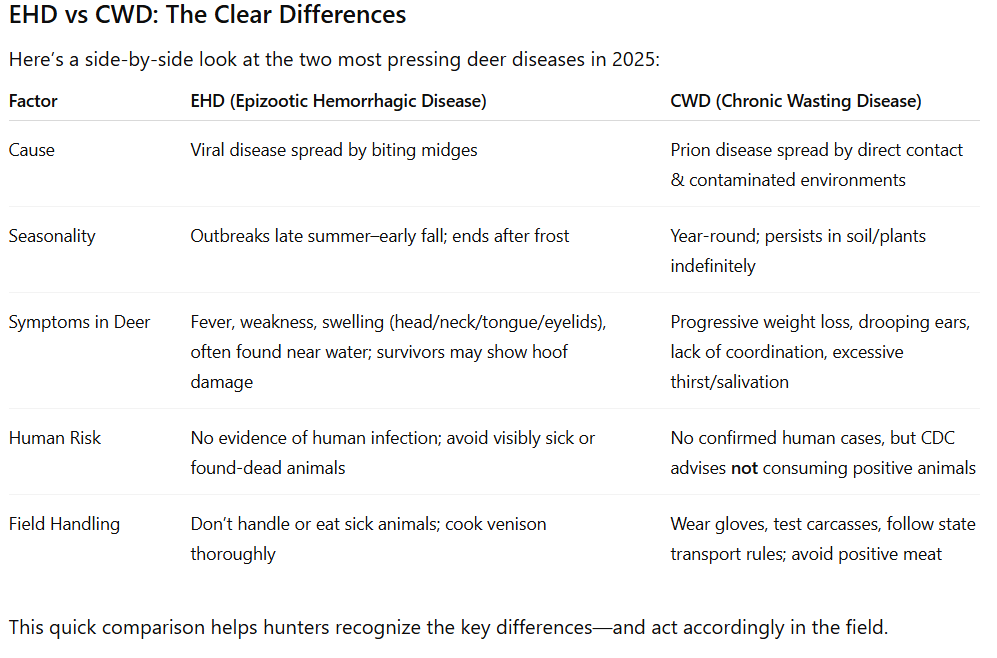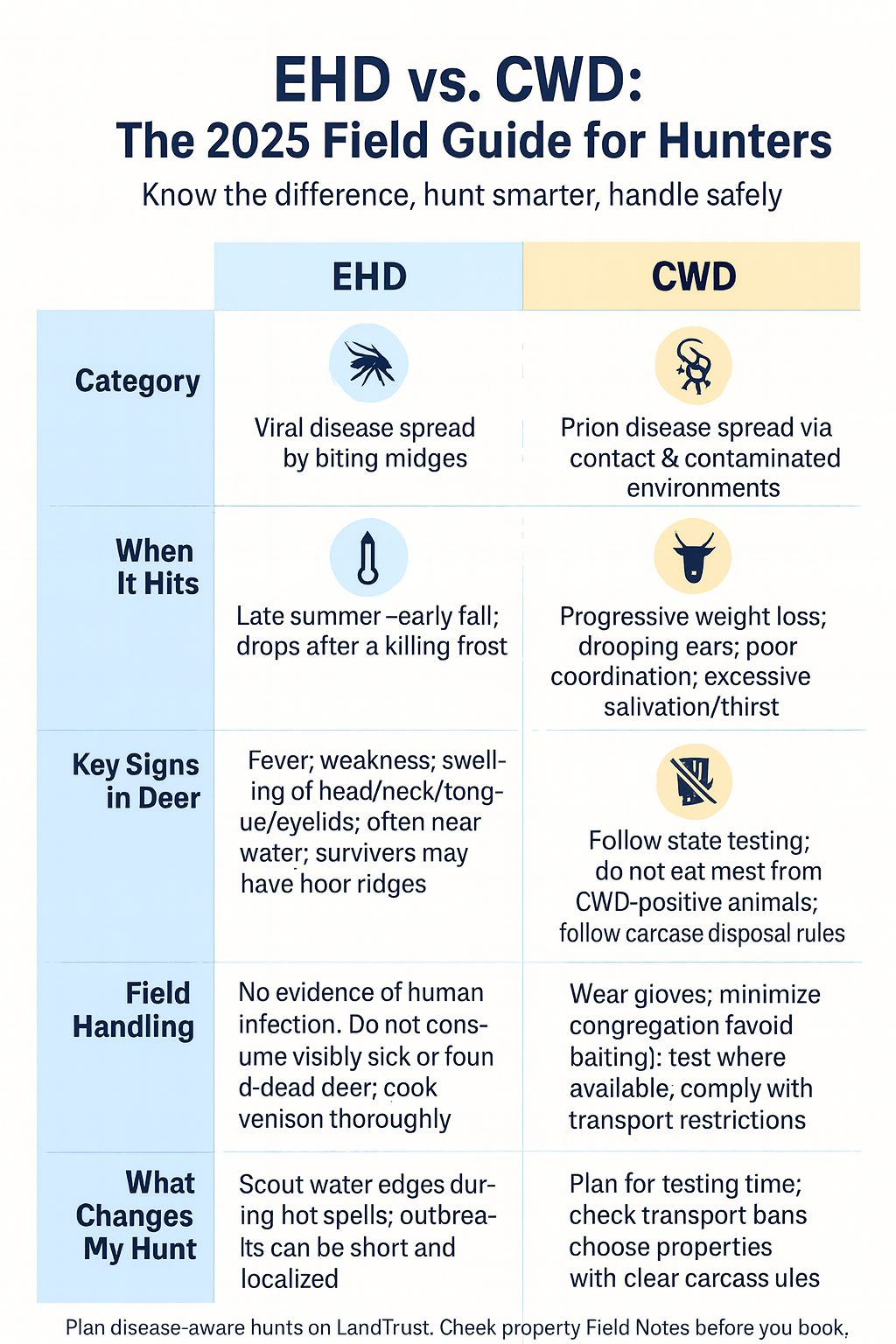Spotlight on EHD and CWD: What Hunters Need to Know in 2025
Deer hunters in 2025 face two major health concerns in whitetail and mule deer herds: Epizootic Hemorrhagic Disease (EHD) and Chronic Wasting Disease (CWD). Both impact deer populations, hunting strategies, and safe meat handling—but in very different ways.
Quick facts for this season:
- CWD: Confirmed in 36 U.S. states as of 2025; prions persist in soil and plants; always fatal; no vaccine or cure.
- EHD: Active outbreaks already confirmed in several states in 2025. Peaks in late summer through early fall, and typically ends after the first killing frost.
For hunters, understanding these differences is key to planning safe, successful trips. With LandTrust, you can book properties where landowners share real-time Field Notes on herd health and local conditions.

2025 Snapshot: Where EHD and CWD Are Showing Up
- CWD in 2025: Now detected in 36 states, with new reports in western mule deer herds (including California). CDC and USGS maps remain the gold standard for up-to-date distribution.
- EHD in 2025: Confirmed cases in Michigan, Maryland, and Ohio, with localized die-offs reported in late summer. State DNRs issue advisories as conditions evolve.
How to interpret maps:
- Endemic zones: Long-established areas of infection—expect mandatory testing and carcass restrictions.
- Emerging detections: Watch closely; management may change mid-season.
- Outbreak alerts: Short-lived EHD spikes should influence timing and scouting strategies.

What Hunters Need to Do Now
Pre-Trip Checklist
- Check your state’s EHD and CWD updates before traveling.
- Review testing and carcass transport rules.
- Scout for water-adjacent hotspots during EHD season.
- Book disease-aware properties on LandTrust with active Field Notes.
In-Field Best Practices
- EHD: Don’t harvest or handle visibly sick deer; note clusters near water.
- CWD: Wear gloves, avoid baiting (congregation risk), follow carcass disposal/testing protocols.
Meat Safety
- EHD: Cook venison thoroughly; avoid sick or found-dead animals.
- CWD: Do not consume meat from positive animals; follow state disposal guidelines.
State-by-State Planning Hub
Hunters in high-interest states should pay special attention: Ohio, Michigan, Wisconsin, Missouri, California, Maryland, Texas, and Pennsylvania.
For each state, know:
- Current status of EHD/CWD
- Testing & transport rules
- Reporting requirements
- Trusted private-land options via LandTrust
Tools & Data: How to Read 2025 Maps and Alerts
- CWD maps: Use CDC/USGS distribution layers. Focus on prevalence and restrictions, not just presence.
- EHD advisories: Watch for hot, dry late-summer conditions; expect outbreaks to end after the first frost.
- Hunter overlay: Combine maps with booking filters and Field Notes for smarter trip timing.
FAQs
What time of year do deer get EHD?
Late summer to early fall, when biting midges are abundant. A killing frost ends the cycle.
Is chronic wasting disease spreading?
Yes. Both range and prevalence are expanding annually, and prions persist in the environment.
Can you eat venison if EHD is in the area?
Yes, if the deer appears healthy. Avoid visibly sick or found-dead deer; always cook meat thoroughly.
What deer are affected by CWD?
All North American cervids—whitetail, mule deer, elk, and moose.
What should you do if you see a sick deer?
Do not approach. Report the exact location to your state wildlife agency.
Conclusion
Staying informed about EHD outbreaks and CWD distribution in 2025 is critical for safe, responsible, and successful hunts.
Hunters booking through LandTrust gain an advantage: access to disease-aware private lands, real-time Field Notes, and transparent communication with landowners.

